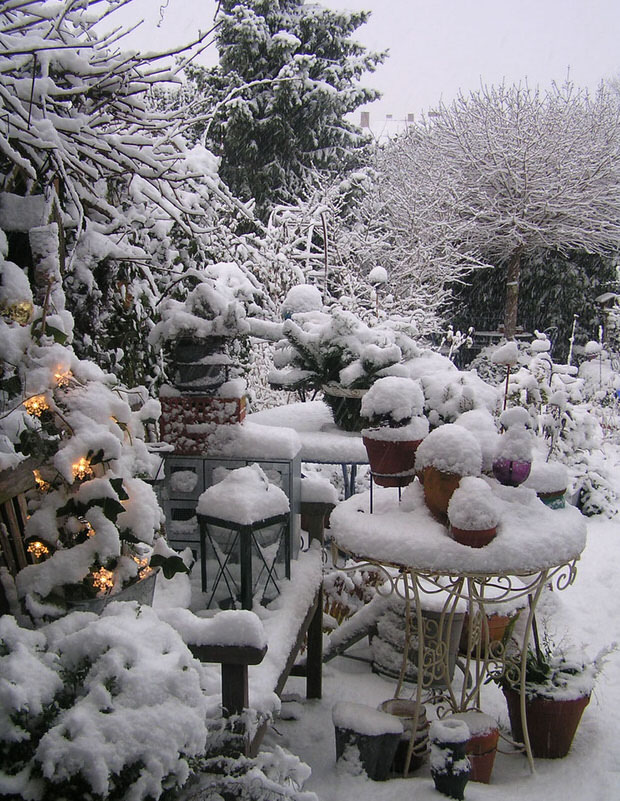
Just because the garden is asleep doesn’t mean there isn’t plenty to do for winter gardeners. Winter gardening takes advantage of little or no plant growth at this time of year to force us to concentrate on admittedly less attractive, but equally important tasks. There are many things you can do this time of year to make sure that your winter garden turns into the spring garden of your dreams.
- If the cold permits, use the winter in the garden to work on structure and hardscaping. This is a great time to plan or build arbors, built in seating, edging and paths. Winter allows you to see the bones of the garden to help you visualize where it needs some hardscaping. Perhaps your paths need to be redirected, or you see a spot that could use a trellis and some height. Take advantage of the bare winter garden to provide your plants with a background and structure.
- Use this time to redesign your flower beds. If you haven’t already created a garden notebook, now is a good time to start. Draw a diagram of each part of your garden, and mark the spot of the flowers, shrubs and bulbs. You may have to add items as spring approaches, and up pops that plant you had forgotten about! Get a basic layout of your garden, and consider what worked last year, and what didn’t. Note blank spots in the garden, and use paper templates to try new combinations of flowers within your beds. Color your paper templates to help you visualize the effect on the garden. Make a separate page for each plant you have in your garden, and note as much information as you can about it.
- This is the time to browse those garden seed catalogs! Don’t wait until spring, by then it will be too late to grow from seed for this season for most plants. Consider ordering some new varieties of old garden favorites such as sunflowers, coneflower and foxglove.
- If you want to plant vegetables this year, now is the time to prepare your beds. Till or spade under your chosen vegetable plot, then add organic matter and fertilizer and till in. Allow to sit several weeks to settle, until proper plating time for your area. This will prevent any hot spots in the garden from your organic matter and fertilizer, and allow the soil to settle to prevent drying out of the roots.
- Start some seeds indoors to have plants ready to put out in the garden after last frost. Now is the time to grow those plants from seed you can’t find at the nursery. Your indoor seed growing station can be as complicated as a deluxe indoor greenhouse with lights, or as simple as a re-used egg carton on a windowsill. Some easy plants to grow indoors from seed include most sun loving annuals and such perennials as Shasta Daisy, Black Eyed Susan, Coneflower, Coreopsis and many ornamental grasses. Growing perennials from seed can save you hundreds of dollars, as the average 4 inch pot perennial sells for $3-$6, and a packet of seeds that might produce 100 plants averages $2.
- Finally, go over all your tools and supplies, and find out what needs repair, attention or replacement. The last thing you want is for that first spring day to arrive and you rush out to pop those first seeds in the ground, only to find your gloves need to be replaced or your spade handle is breaking!
Just because the weather is cold doesn’t mean gardeners must sleep! Use the time wisely, and you will be rewarded with plenty of time to enjoy those spring bulbs and fragrant flowers in just a short time!






